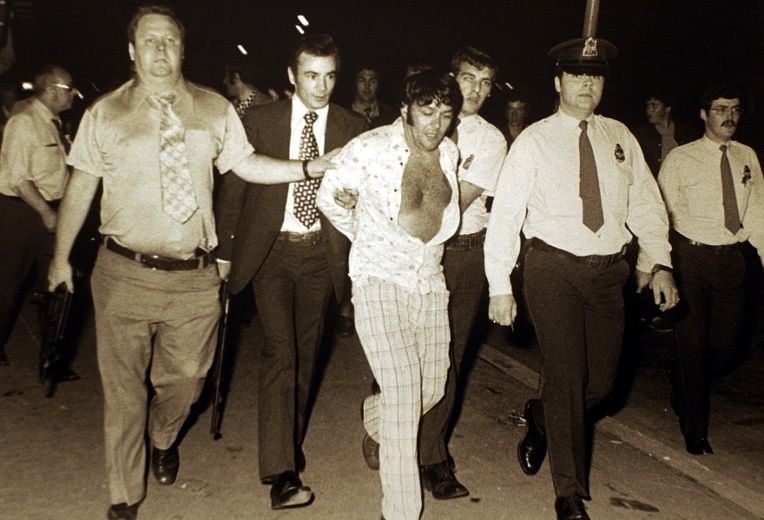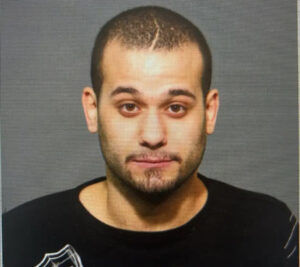The Montreal Gazette office’s phone was ringing in the evening on October 15th of 1985. A man was at the other end of the line. Declaring a statement that would shock the journalists and secretaries in the office. On the other end of the line, was a man claiming to be a member of the Red Army Liberation Front. He would announce the following statement; “I and my colleagues have just assassinated Frank Shoofey. Good Riddance”. Frank Shoofey was a criminal defense lawyer, and one of the best known criminal lawyer in the history of Montreal. This is his story.

Franklin Dimitrios Shoofey was born in 1941. A tried and true native Montrealer. Born in working class neighborhood in the downtown sector of Montreal, to Lebanese parents. His mother admired American president Franklin D. Roosevelt and wanted to name him after Roosevelt, but his parents were also very devoted Christians, and the Greek orthodox church had suggested to name him after a Christian saint instead. She eventually reached a compromise and named him Franklin Dimitrios, including both a saints name, as well as the Franklin surname.

Frank was persistent and worked very hard in school to obtain a good-paying job. When he was 17, his father had passed away, which meant he had to be the man of the house; to be the provider for the family. He wanted to continue schooling and reap the fruits of his labor, but also had to work to pay the education fees. He worked as well as being a student, multitasking both for a number of years. He eventually entered law school all the while selling encyclopedias, insurance and furnaces.

But the efforts Frank put out didn’t yield the results he would anticipate. He would fail the bar examinations for civil law. Feeling discouraged, he eventually set his sights on a more available goal. Criminal law. Little did he know that this decision would eventually lead to his success, wealth and death.

Shoofey would apply at McGill and gain his BA in 1961, followed by his BCL in 1964. After obtaining his dergrees he would eventually partner with his first law firm with lawyers Morneau, Blais, Rolland, Pariseau, Poupart. Shoofey’s career and persistence would lead to him being a workaholic; writing for newspapers, appearing as a guest on television and participating in the Quebec Liberal Party all while performing his duties as a lawyer.

Throughout the years, Shoofey would gain a big name circulating in the Montreal underworld in the 70’s. Richard Blass. Blass was a Montrealer who was born in the Rosemont borough, on the East-End, in 1945, at the end of World War II. He began doing petty crimes with his brother Mario, in the island’s downtown sector and eventually blossomed and committed higher-risk crimes as time passed on. Blass also had a strong dislike for the Italian mob. Blass was not in any particular gang, but did have friends in which he could rely on, rather a crew who also opposed the mob.

In 1968, Blass set his sights on Montreal mob boss at the time, Frank Cotroni. Blass and a fellow criminal decided to ambush Cotroni outside of his home. Both of Cotroni’s bodyguards had been killed in the ambush, but Cotroni managed to escape, unscathed. But this action did not go unpunished, as Cotroni’s soldiers had managed to kill two guys on Blass’s crew, along with murdering another a few days later.

Blass had many more men that were ready to go to war with the Cotroni faction of the Montreal mob and this would lead to a bloody back and forth of killings between Blass’s crew and Cotroni’s men. Later on in the summer of 1968, the Italians would make their first attempt on Richard Blass’s life. The attempted hit took place while Blass was sipping on a drink in a bar. 2 mob men had entered the bar and unloaded multiple shots at Blass, although Blass escaped without a scratch.


The second attempt on Blass’s life came while he was staying at a motel, in which was set on fire and killed 3 innocent victims while Blass escaped, unhurt. By this time, the media was all over this man, naming him ‘Le Chat’ (The Cat), hinting at how he had escaped multiple assassination attempts by mafia hitmen, and how he seemed to have nine lives. Blass basked in the glory at the attention the local papers had brought to him.

Blass would suffer a third attempt on his life by Mafia hitmen in 1968, but this time, he would get struck. While pulling into a garage, Cotroni gunman Joe Di Maulo shot both Blass and his partner Claude Menard. Blass was shot in the head but did not succumb to his wounds. At the hospital, he refused to identify his attacker. Even with the seriousness of his wounds, Blass was seen a few weeks later, jumping the counter of a bank, robbing it at gunpoint.

Blass would then be convicted in which he escaped, not once, but twice. Blass would pursue on with his criminal endeavors in the following years. Blass was known as a shit-disturber in the East-End bar scene, more specifically, Le Gargantua. Legend says, on the 21st of January, 1975, while frequenting the above mentioned bar, he would lock 10 men and 3 women inside the bar locker and proceed to set the place on fire, which would eventually lead to the death of all 13 individuals. Authorities would pin this event to Richard Blass and eventually find him 3 days later, asleep in a cottage in Val-David. They immediately peppered him with over 30 bullets, telling media that Blass had a gun in hand, ready to shoot at the cops.

Renegade cop, Albert Lisacek, would later admit on his death bed that Blass was unharmed and authorities shot to kill, to redeem the death of the 13 individuals killed three days earlier. Frank Shoofey would be Blass’s lawyer until his death, even claiming that Blass was left-handed and the gun found at his murder was in his right-hand, hence planted. Shoofey also wrote a book about Blass in the years following his death.

In 1974, Shoofey had implied himself in the theft of Brother Andre Bessette’s preserved heart which had been held at the massive Saint Joseph’s Oratory church located in Cote-Des-Neiges. Shoofey received a phone call indicating where the heart was. With help from the authorities, they had retrieved the heart from a Montreal basement.
Along with Richard Blass, Shoofey also took up 4 suspects that were involved in Paolo Violi’s murder in in 1978. Shoofey would state that most of his clients were guilty, but this did not mean he would do his best to get them acquitted, which most lawyers did not do. He also had limits, he wouldn’t take up a client who was charged of rape or child molestation. He found those types of crimes to be senseless.

Shoofey was also an advocate for the poor, seeing as he grew up in a poor family also. He would also partake in hostage negotiations, assuring the criminals that police would not hurt them if they decided to surrender. Shoofey had also tried multiple times to gain a nomination in the Quebec Liberal Party, most notably in the St-Jacques sector of Montreal. He was never nominated due to his past relationship’s with criminals.

In the months leading up to his death, Shoofey started the class-action lawsuit of abortion doctor, Henry Morgentaler. His client at the time, wanted to pursue Morgentaler for National Film Board productions showing Morgentaler performing abortions.
In the 80’s boxing matches in Montreal were rigged. And they weren’t rigged by anybody, but rather the Montreal Mafia and Frank Cotroni. Cotroni was known as a ‘guiding spirit’ in the sport, deciding who will win, and who will lose, by rigging the matches. Cotroni rigged the matches so it was in his favor monetarily. Cotroni was suspected of having influenced David Hilton Sr.’s sons to sign with infamous boxing mogul Don King. Shoofey was David Hilton’s lawyer and had strongly opposed the contract for the Hilton’s to sign to Don King.

Shoofey would eventually fight this cause, this might of been the factor to his death, with many theories pointing to the Cotroni mob had hired a hit on Frank Shoofey. His last evening alive would be spent at the Montreal Athletics Commission trying to prevent Don King from promoting the Matthew Hilton fight.

In the evening of October 15th, 1985. An assailant entered the building in which Shoofey’s office was located at. The assailant caught Shoofey in the hallway of his office on the fifth-floor of the building, pumping multiple bullets into him. The call from the ‘Red Army Liberation Front’ would then make the infamous phone call to the Montreal Gazette. It didn’t add up. Provincial police had no records of a ‘Red Army Liberation Front’ ever existing.
Many people including fellow colleagues of Shoofey at the time, had thought the murder was planned by the Cotroni family, due to Shoofey persuading the Hilton’s not to sign with Don King. But why would Frank Cotroni have someone killed over whether or not a boxer would sign to Don King?

Real Simard, a hitman and right-hand for Cotroni, had eventually turned informant and also stated that Cotroni ordered the hit. Cotroni had to raise funds to fight an extradition request to the United States for heroin-smuggling, and selling the Hilton’s contract to Don King is how he would finance the funds for his lawyer fees. There is no doubt in my mind that Shoofey’s hit was ordered by Frank Cotroni, but, to this day, it remains a cold case.






